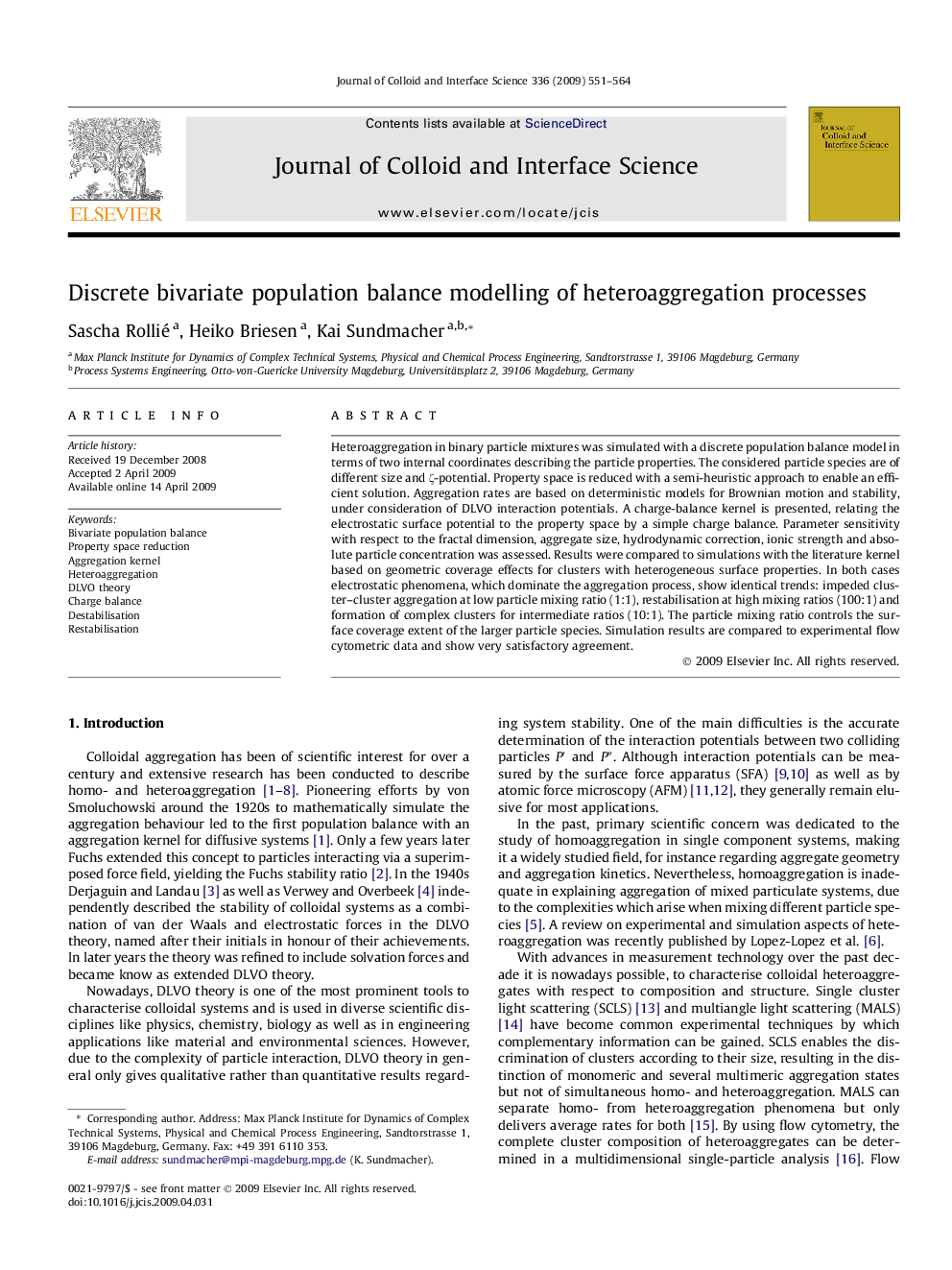| Article ID | Journal | Published Year | Pages | File Type |
|---|---|---|---|---|
| 610162 | Journal of Colloid and Interface Science | 2009 | 14 Pages |
Heteroaggregation in binary particle mixtures was simulated with a discrete population balance model in terms of two internal coordinates describing the particle properties. The considered particle species are of different size and ζ-potential. Property space is reduced with a semi-heuristic approach to enable an efficient solution. Aggregation rates are based on deterministic models for Brownian motion and stability, under consideration of DLVO interaction potentials. A charge-balance kernel is presented, relating the electrostatic surface potential to the property space by a simple charge balance. Parameter sensitivity with respect to the fractal dimension, aggregate size, hydrodynamic correction, ionic strength and absolute particle concentration was assessed. Results were compared to simulations with the literature kernel based on geometric coverage effects for clusters with heterogeneous surface properties. In both cases electrostatic phenomena, which dominate the aggregation process, show identical trends: impeded cluster–cluster aggregation at low particle mixing ratio (1:1), restabilisation at high mixing ratios (100:1) and formation of complex clusters for intermediate ratios (10:1). The particle mixing ratio controls the surface coverage extent of the larger particle species. Simulation results are compared to experimental flow cytometric data and show very satisfactory agreement.
Graphical abstractHeteroaggregation of binary particle mixtures is simulated with a population balance model and verified by flow cytometric data.Figure optionsDownload full-size imageDownload as PowerPoint slide
